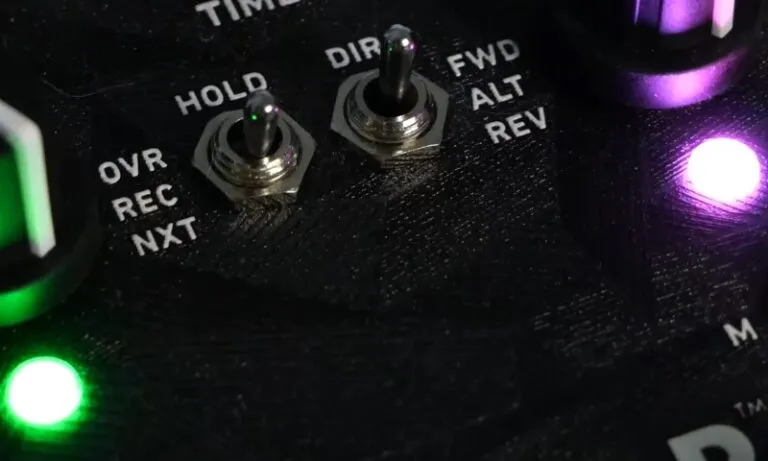12 string guitar tuning can seem pretty intimidating, especially if you’re used to a standard 6-string. I remember my first encounter with a 12-string guitar. A friend gave it to me because she couldn’t figure out how to tune it. I spent hours trying to tune it by ear (therefore these tips, I wish someone had given them to me back then).
With a bit of practice and the right tools, you can get the hang of it. In this guide, I’ll walk you through everything you need to know to tune your 12-string guitar perfectly, from the basics to some advanced tips.
Table of Contents
ToggleBefore you start 12 string guitar tuning…
A 12-string guitar has six pairs of strings. Each pair consists of two strings that are tuned to the same note or an octave apart. The lower four pairs (E, A, D, and G) are tuned with one string an octave higher, while the higher two pairs (B and E) are tuned to the same pitch.
Standard tuning
The most common tuning for a 12-string guitar is Standard Tuning, which mirrors the tuning of a standard 6-string guitar. In Standard Tuning, the pairs are tuned to E A D G B E. Here’s a quick reference for the notes:
- Low E pair: E3 and E2
- A pair: A3 and A2
- D pair: D4 and D3
- G pair: G4 and G3
- B pair: B3 and B3
- High E pair: E4 and E4
Tools for 12 string guitar tuning
Investing in a good chromatic tuner is essential. Chromatic tuners can detect all notes, making it easier to tune each string accurately. Guitar tuner apps are also a great option, and some automatic tuners like the Roadie can make the 12 string guitar tuning even simpler by tuning each string for you.
Step-by-step tuning guide
Step #1: Tune the Primary Strings
Start by tuning the thicker strings of each pair, commonly referred to as the primary strings. Grab your chromatic tuner and adjust each string to its correct pitch: E, A, D, G, B, and E. Work systematically, ensuring that each string is in tune before moving to the next one.
These primary strings serve as the backbone of your guitar’s sound, so take your time to get them just right.
Step #2: Tune the Octave Strings
Move on to the thinner strings in the lower four pairs, known as the octave strings. These strings should sound one octave higher than their corresponding primary strings. For example, when the primary string in the E pair is tuned to E3, the octave string needs to be set to E4. Repeat this for the A, D, and G pairs.
Pay close attention to the tuner and listen carefully to ensure the octave strings add the bright, shimmering tone unique to 12-string guitars.
Step #3: Tune the Unison Strings
Next, focus on the unison strings, which are part of the B and high E pairs. These thinner strings must match the pitch of their corresponding primary strings exactly. For instance, when the primary B string is tuned to B3, tune the unison string to B3 as well.
Do the same for the high E pair. This step ensures that these pairs produce a consistent, harmonious tone that complements the octave pairs.
Step #4: Check and Fine-Tune
After tuning all the strings, play each pair together to check their harmony. Listen closely to how the strings resonate and make fine adjustments where needed. Use your chromatic tuner for precise tweaks, but also trust your ears to perfect the sound.
Play chords and individual notes to confirm the pairs are balanced and produce the lush, full tone that defines a well-tuned 12-string guitar. This final step polishes your tuning, allowing the instrument’s rich, layered sound to shine.
Alternate tunings
Half-step down tuning
To reduce tension on the neck and achieve a warmer tone, some players prefer tuning their 12-string guitar a half-step down. This involves tuning each string down by a semitone. The tuning will be: Eb Ab Db Gb Bb Eb.
Drop-D tuning
Drop-D tuning is another popular choice. To achieve this, tune the low E pair down a whole step to D while keeping the other strings in standard tuning. This can create a deeper, more resonant sound, perfect for certain genres and styles.
This type of tuning is very popular among modern metal musicians. Many bands aiming for an aggressive sound use drop-D tuning, with notable examples including Bullet for My Valentine, Bring Me the Horizon, and A Day to Remember.
Open tunings
Open tunings can add a unique flavor to your playing. Common open tunings for 12-string guitars include:
- Open E: E B E G# B E
- Open D: D A D F# A D
- Open C: C G C G C E
- Open G: D G D G B D
These tunings can create a resonant, drone-like effect, ideal for slide guitar and certain folk styles.
Read more: What is the Standard Tuning for DADGAD?
Tips for easier tuning
The best way to tune your guitar is by ear, as it helps improve your playing skills. Use can also use professional tuners, but they cannot be found in average local stores.
Try a guitar tuner app
There are several guitar tuner apps available that are specifically designed for 12-string guitars. These apps can guide you through the process and ensure each string is in tune.
How do humidity and temperature influence the12 string guitar tuning?
Humidity and temperature significantly impact a 12 string guitar tuning. High humidity causes the wood to absorb moisture and expand, while low humidity makes it dry out and contract, both affecting string tension and tuning.
Temperature changes affect the metal strings and wood, causing them to expand or contract, which can alter pitch and tuning stability. To maintain tuning, monitor humidity with a hygrometer, keep the guitar in a stable temperature environment, use humidifiers or dehumidifiers as needed, and perform regular maintenance.
Just like Patches Co. ensures quality in every patch they sell, caring for your guitar with the right environment and tools ensures it stays in perfect tune.
One of the most influential guitarists, according to many the unsurpassed Jimmy Page, the guitarist of the greatest rock band of the seventies, Led Zeppelin, used this type of guitar in many songs. The model he used is the Gibson 1969 EDS-1275 Doubleneck.
Challenges that might appear…
String breakage
12 string guitar tuning puts extra tension on the strings, which can lead to breakage. To minimize this, tune the strings slowly and evenly. If you notice any strings fraying or showing signs of wear, replace them promptly.
Intonation issues
With more strings, intonation can become a problem. Regularly check and adjust the intonation of your guitar to ensure it stays in tune across the fretboard. This can often be done with the help of a professional guitar technician.
Maintaining consistency
12-string guitars can be more sensitive to changes in humidity and temperature. Store your guitar in a stable environment and use a humidifier if necessary to maintain consistent tuning.
The bottom line
Although 12 string guitar tuning might be challenging at first, with some practice, it becomes second nature. Just be patient! The rich, full sound you get from a properly tuned 12-string guitar is worth the effort.
Related Posts:
- The Ultimate Guide to Tuning a 7 String Guitar -…
- How to Tune Your Guitar Strings - A Step-by-Step Guide
- How Do You Play Classico Tenacious D on Guitar? -…
- How To Tune An Electric Guitar - Mastering the Melody
- How to Tune a Guitar by Ear? Tips for Developing…
- How to Tune a Floyd Rose: Tips for Beginners and…















